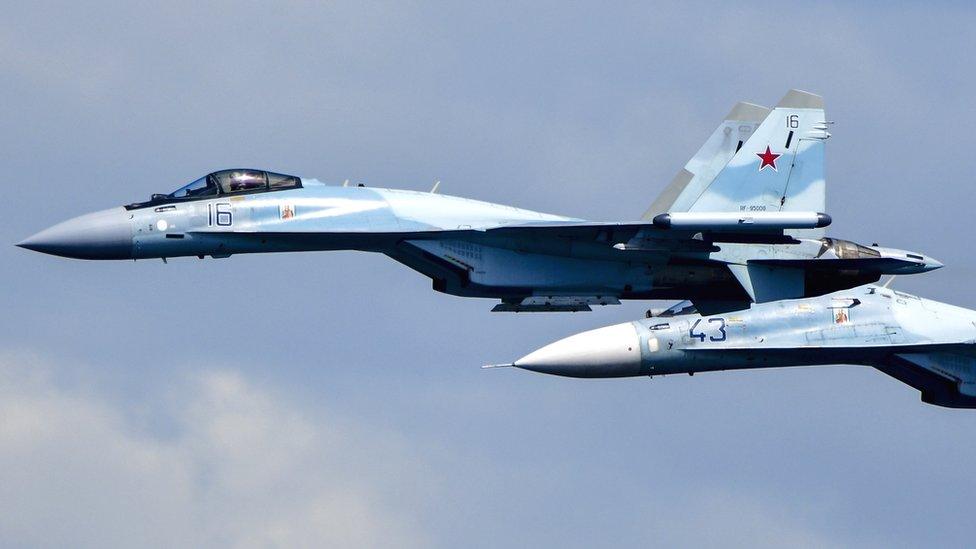Turkey to get Russian S-400 missile system 'in July' amid row over US jets
- Published
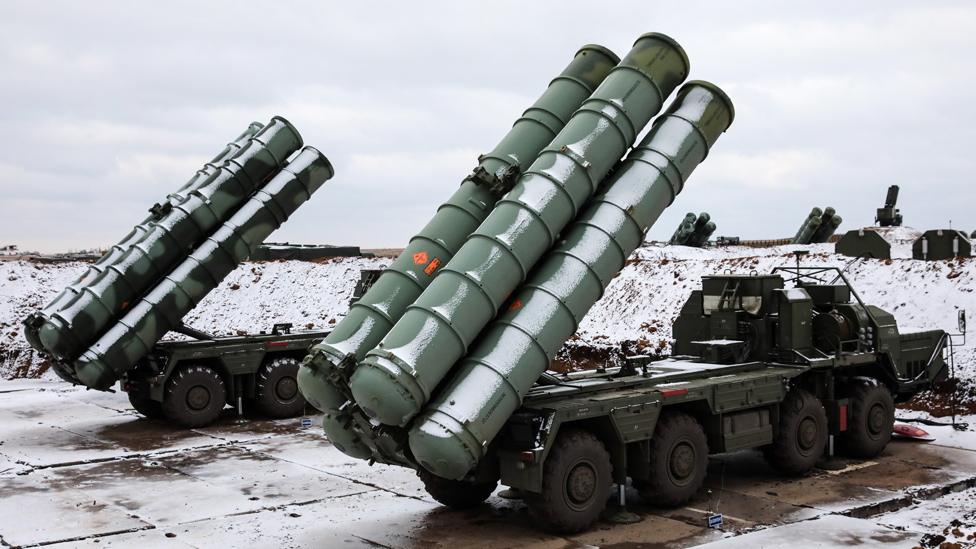
The S-400 is one of the most sophisticated surface-to-air missile systems
Turkey's President Erdogan says he hopes a Russian missile system that Washington sees as a threat to US jets will be delivered in July.
The US had said Turkey could not have both the S-400 anti-aircraft defence system and US F-35 fighter jets.
But Mr Erdogan said Turkey would hold to account anyone who excluded Turkey from the F-35 programme.
Nato member Turkey has signed up to buying 100 F-35s and has invested heavily in the F-35 programme.
Turkish companies produce 937 of the plane's parts.
Mr Erdogan said he hoped to resolve the situation with the US through phone diplomacy ahead of a meeting with President Trump at the end of June, Reuters reported.
F-35s on HMS Queen Elizabeth carry out the first "rolling" landing.
Turkey has been pursuing an increasingly independent defence policy and has been establishing closer links with Russia after a recent souring of its ties with the US and Europe.
What has the US been telling Turkey?
US acting Secretary of Defence Patrick Shanahan last week wrote to his Turkish counterpart that the US was "disappointed", external to hear that Turkish personnel have been sent to Russia to train on the S-400.
Another senior US official, Under Secretary of Defence Ellen Lord, told reporters that the US did not want Russian technicians to be able to access the F-35's vulnerabilities.
"We do not want to have the F-35 in close proximity to the S-400 over a period of time because of the ability to understand the profile of the F-35 on that particular piece of equipment," she said.
US officials had wanted Turkey to buy its Patriot missile system instead.
Turkey has the second-largest army in Nato, a 29-member military alliance set up to defend against what was at the time the Soviet Union.
What is the S-400 system?
The S-400 "Triumf" is one of the most sophisticated surface-to-air missile systems in the world.
It has a range of 400km (250 miles), and one S-400 integrated system can shoot down up to 80 targets simultaneously.
Russia says it can hit aerial targets ranging from low-flying drones to aircraft flying at various altitudes and long-range missiles.

How does the S-400 work?
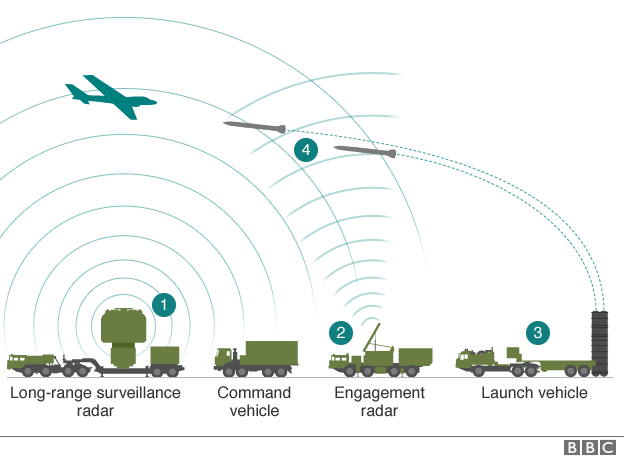
Long-range surveillance radar tracks objects and relays information to command vehicle, which assesses potential targets
Target is identified and command vehicle orders missile launch
Launch data are sent to the best placed launch vehicle and it releases surface-to-air missiles
Engagement radar helps guide missiles towards target

- Published9 June 2019
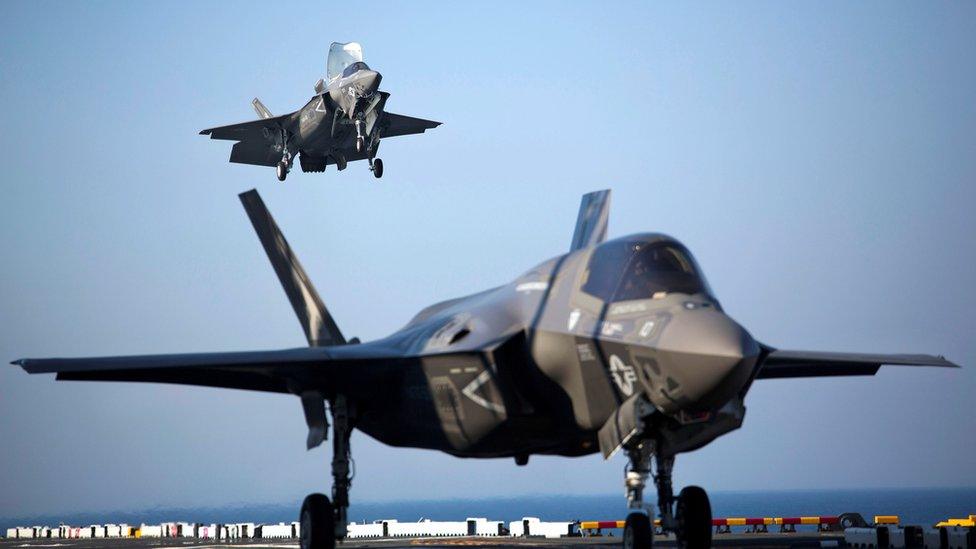
- Published12 September 2017
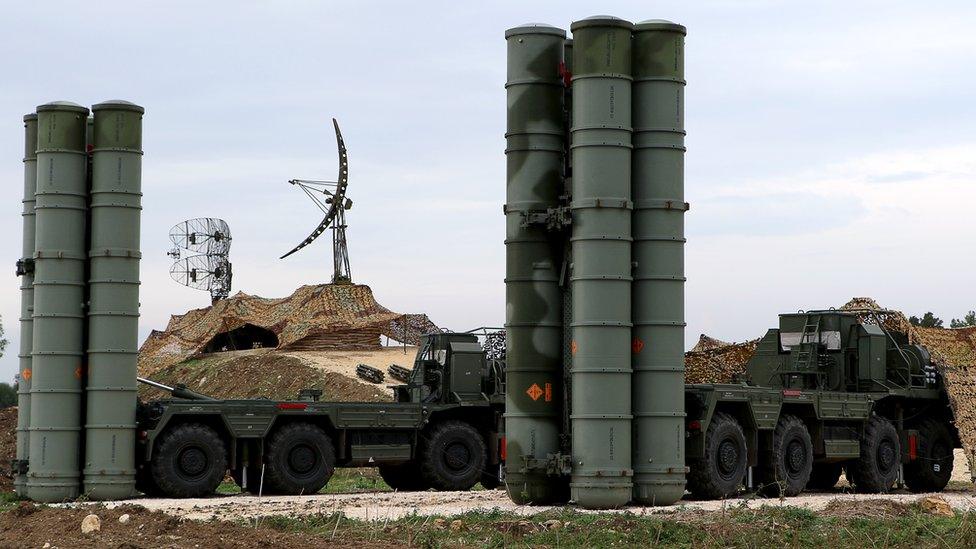
- Published5 October 2018
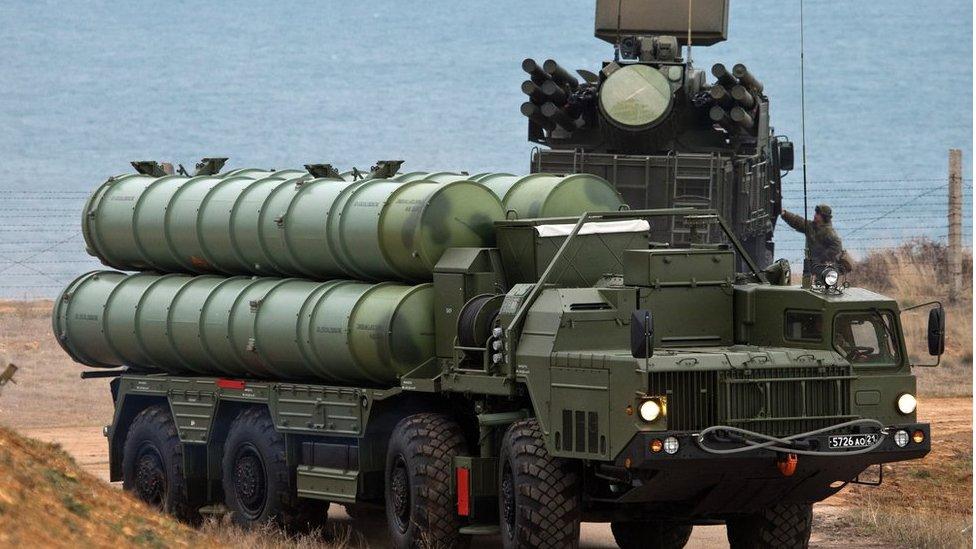
- Published21 September 2018
